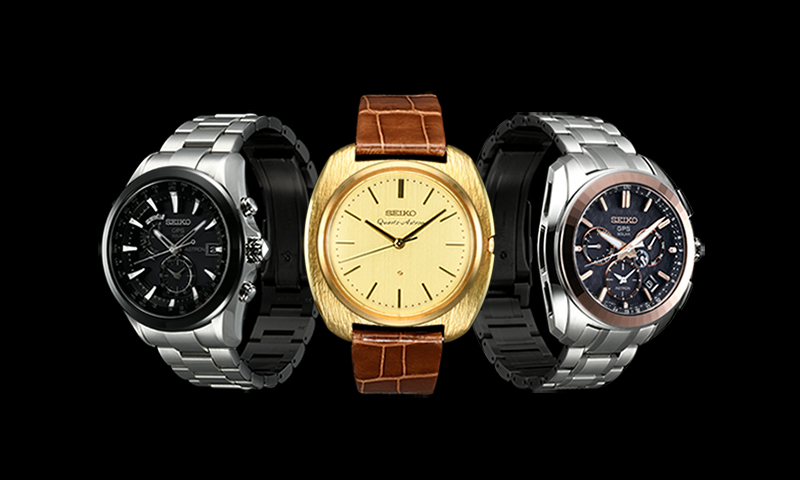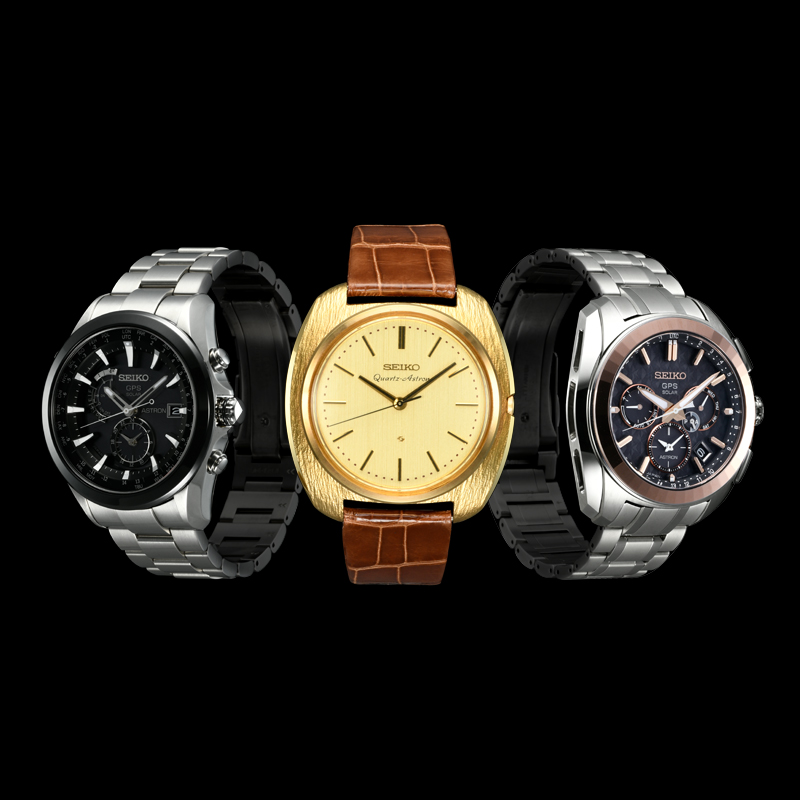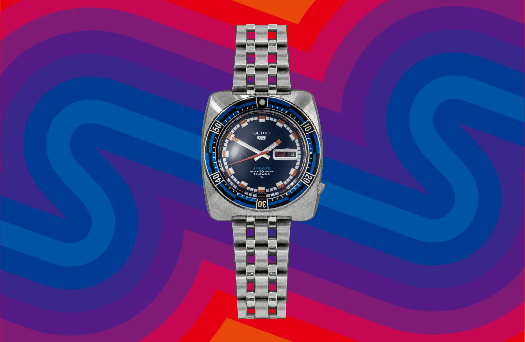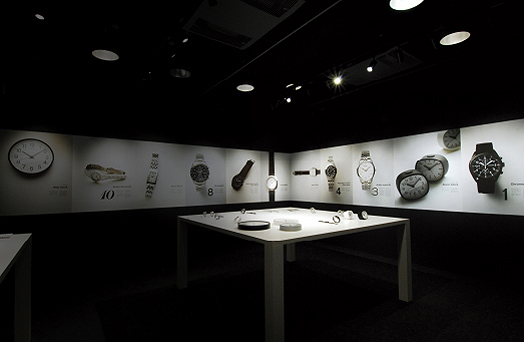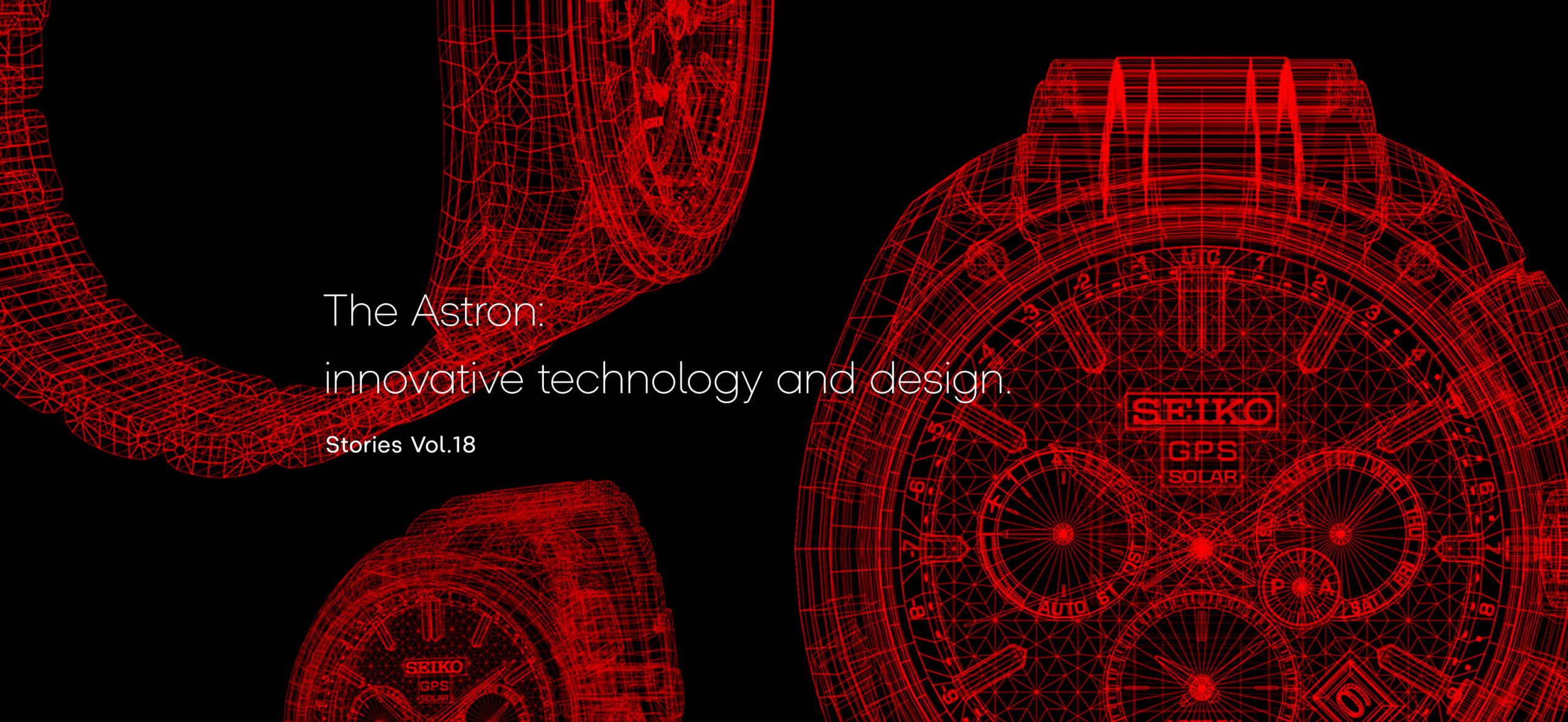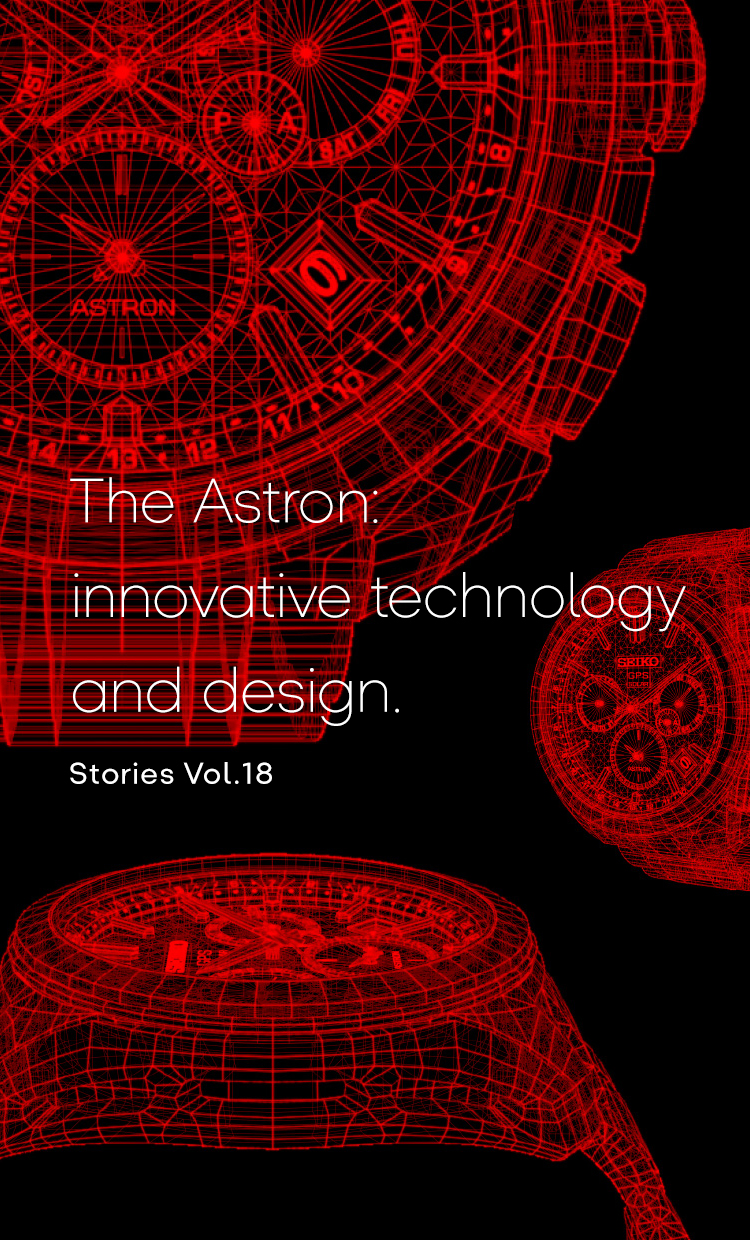A half century since its debut—the steadfast spirit.
I would like to talk about the Astron, which celebrated its 50th anniversary in 2019. This brand has a half-century history, so of course a wide variety of models have been put out into the world. Yet there remains a steadfast spirit, or the Astron qualities.
That is, taking on the challenge to explore new areas and open the way to the future, both in technology and design. Now, let’s look at the actual products and delve into the Astron’s spirit of innovation.
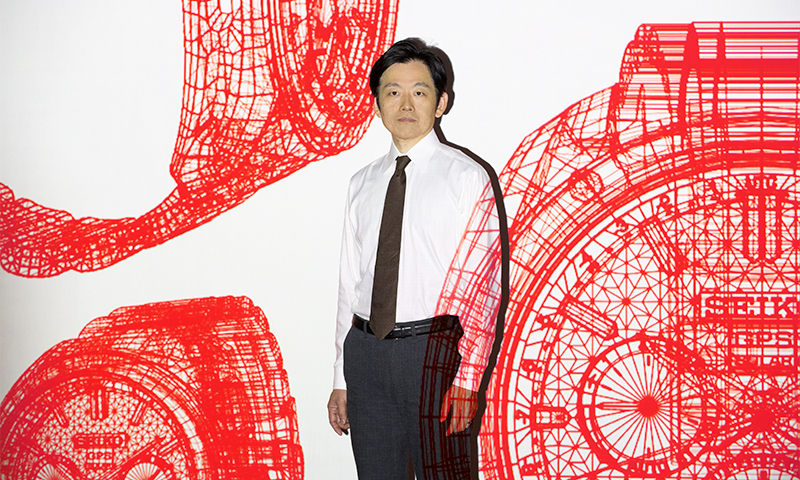
Kamata joined Seiko in 1996 and was designing watches for the global market. He was stationed in Italy and now works as Design Director of watches for the Japanese domestic market. To date he has worked on the Brightz and Astron collections.
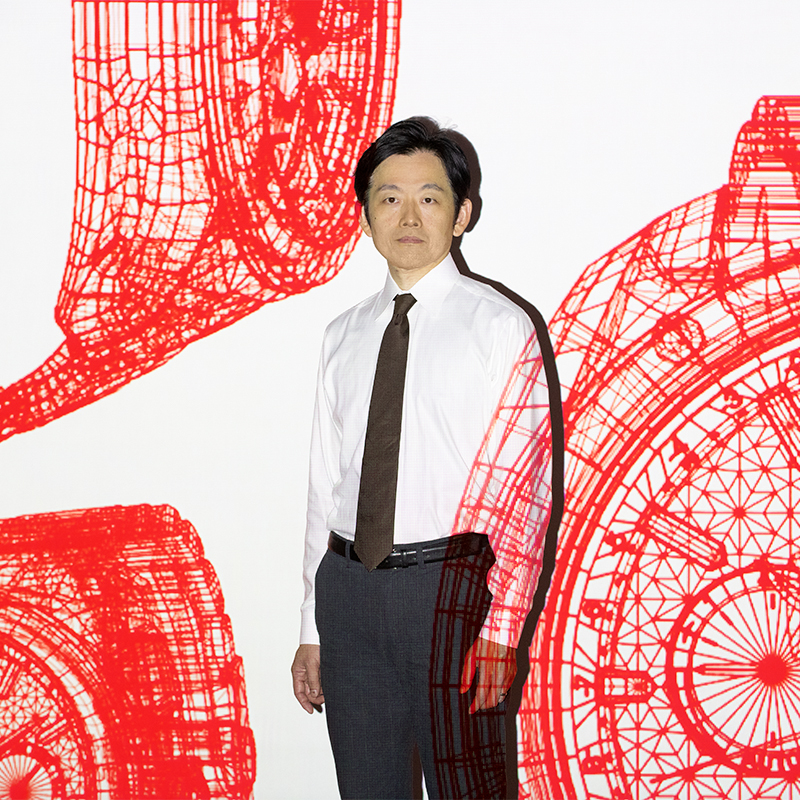
Kamata joined Seiko in 1996 and was designing watches for the global market. He was stationed in Italy and now works as Design Director of watches for the Japanese domestic market. To date he has worked on the Brightz and Astron collections.
The very first Astron, introduced in 1969. This, the world’s first quartz watch, was sold out in a short period of time in spite of its high price.
The very first Astron was introduced in 1969 as the world’s first quartz watch. Its accuracy was revolutionary, at about ±0.2 of a second per day and ±5 seconds per month, which was about 100 times more accurate than the mechanical watches back then. The overwhelming quality made a huge impact on the watch industry.
The price of the first Astron was JPY 450,000 (USD 4,154.00); an extremely high price roughly equivalent to a Japanese-made automobile for that time. However, after the launch of the Astron, the prices of quartz watches grew progressively cheaper, and as a result, quartz watches saw a boom in popularity, in what came to be called the “quartz revolution.”
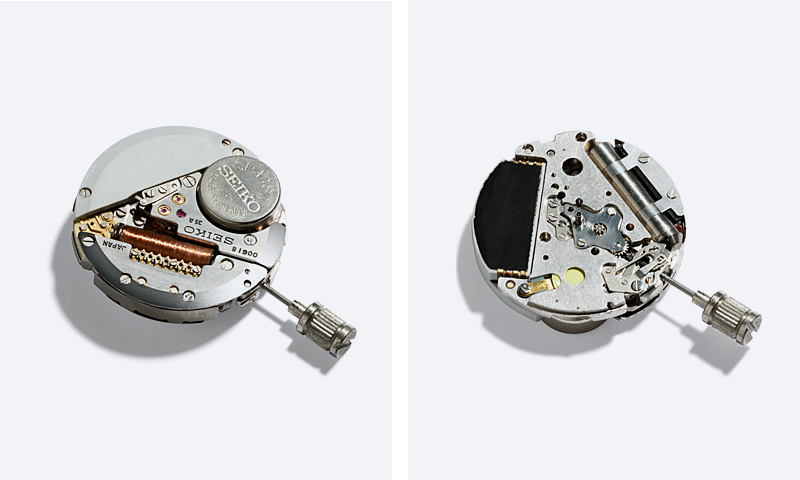
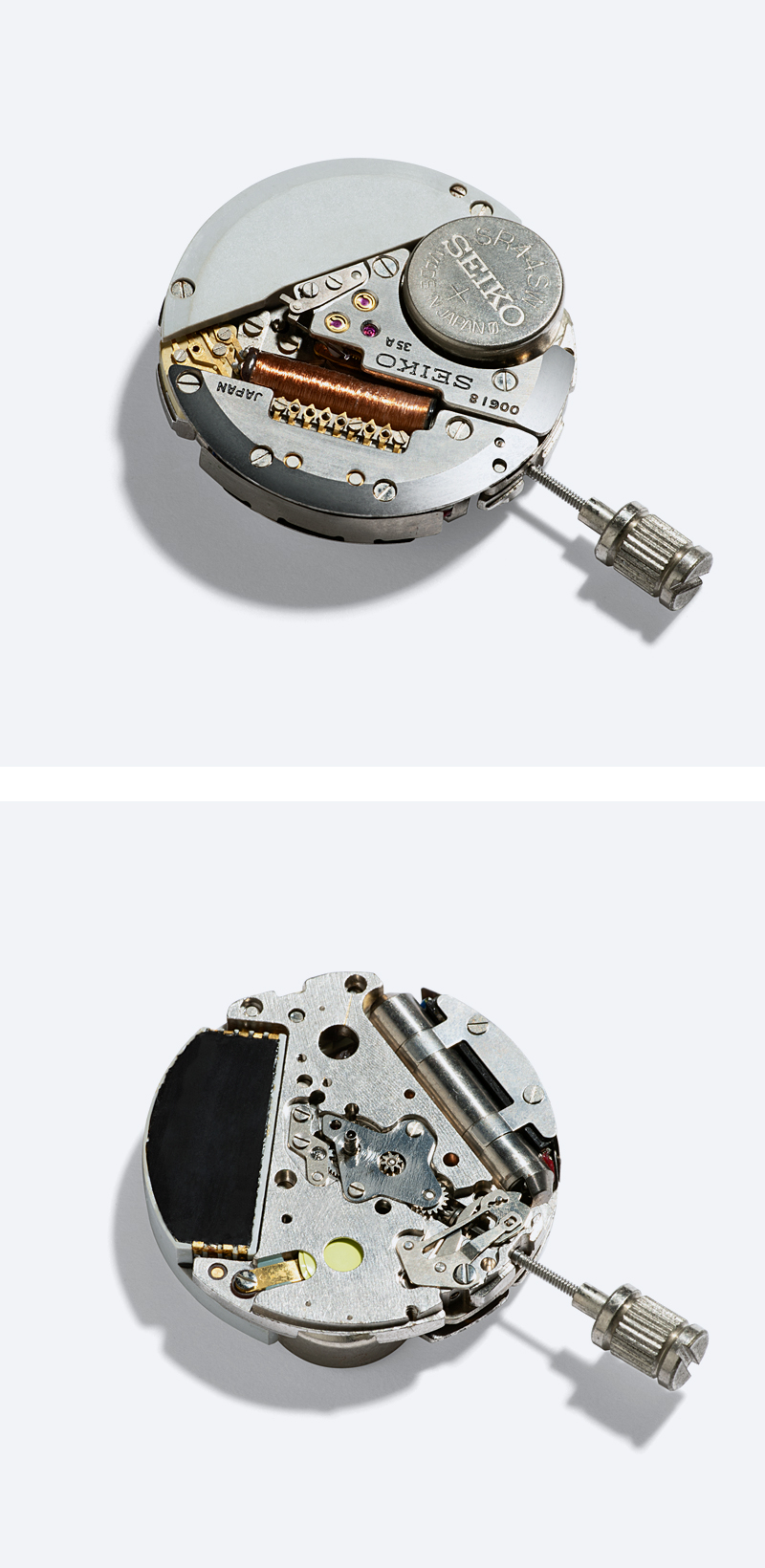
The design of the first Astron was determined through an in-house competition, which was an unusual way at that time. I heard from one of the designers in charge at the time that within the predetermined condition of a solid gold case, the intent was to devise an orthodox design while incorporating the concepts of a “luxury look” and a “slim look.”
The case surface has an irregular, uneven texture. This is made by a fine grinding tool called a leutor which has a small, rounded grindstone attached to its head. Back then, this kind of hand carved pattern emerged as a means to prove that the case was made of a precious metal.
The deliberate thinness of the design was intended to show its uniqueness, differentiating it from the prevailing bulky mechanical watches at that time. To achieve this, the flow of the form from the case to the strap was designed not with a straight-line style, but as a tangent-line style to make the case look thin. This style has been passed down to the current models as a feature of the Astron.
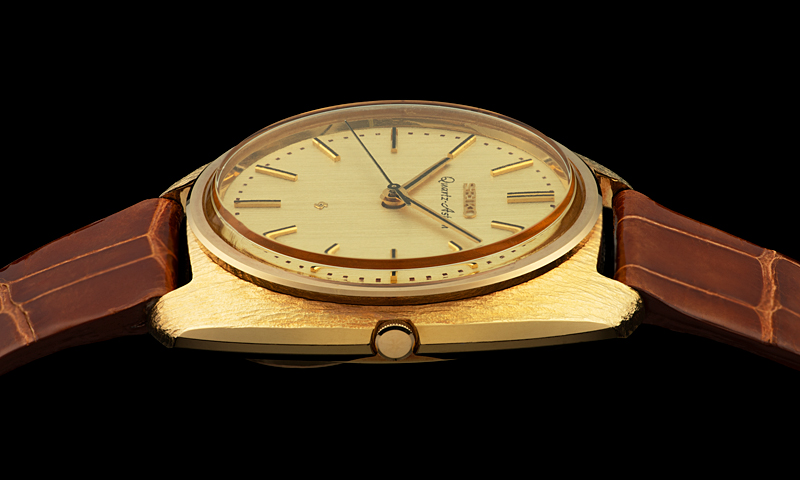
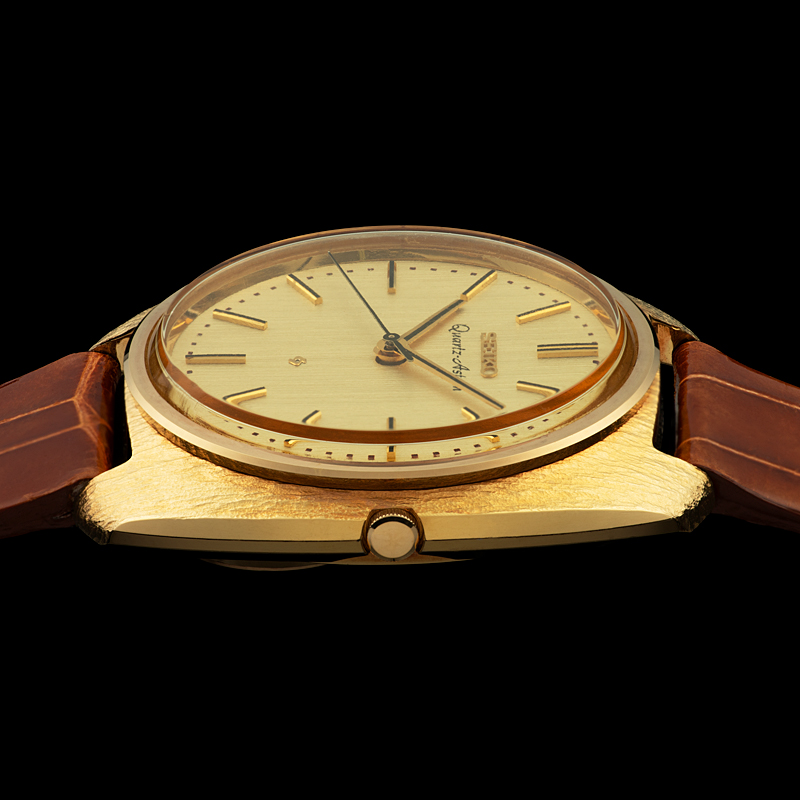
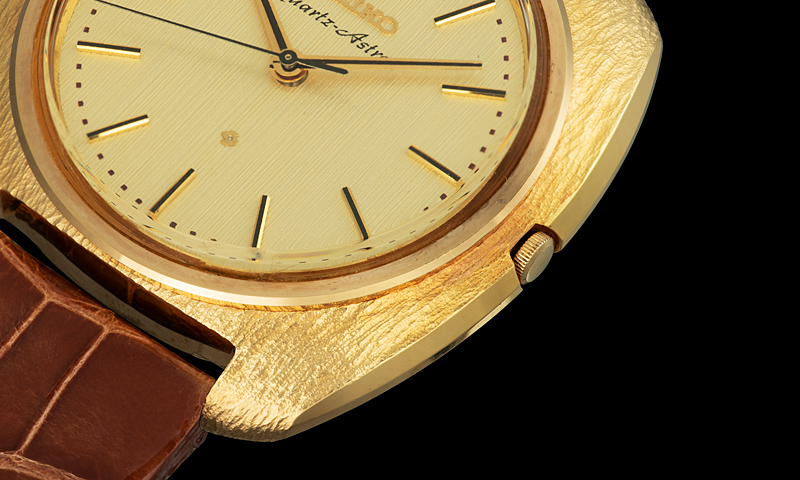
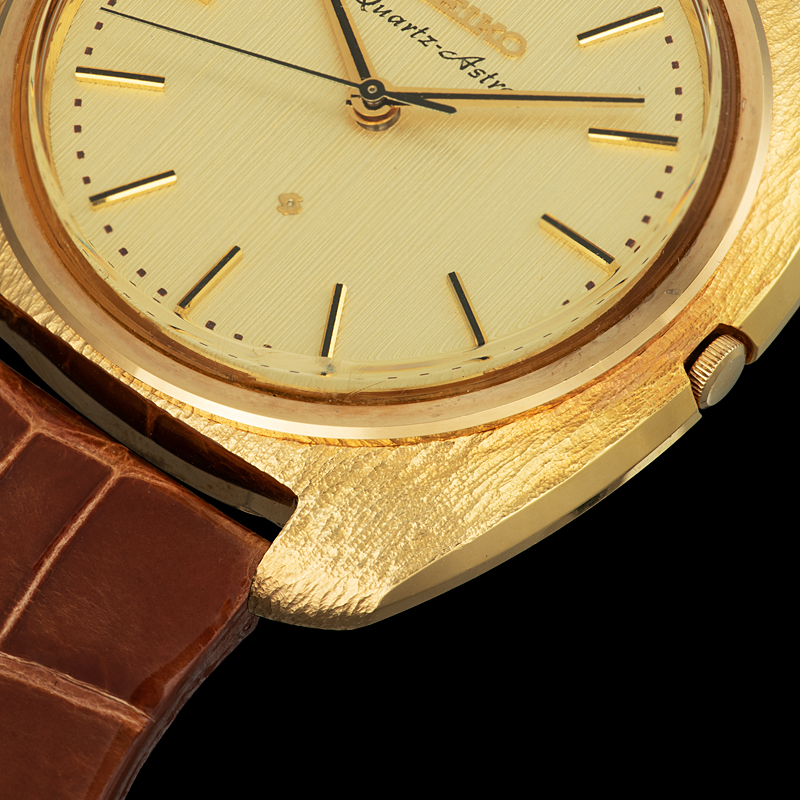
The restrictions of a GPS solar watch led to the design.
In 2012, an event occurred that could be called the second technological innovation of the Astron. This was the launch of the world’s first GPS solar watch. The watch connects to the GPS network and receives time and location data anywhere on Earth. It is a revolutionary watch that can display the exact local time.
GPS solar itself is a matter of technology, but in terms of watch design that condenses that technology into a miniscule space, the technology and the design have an inseparable relationship. Structurally, the Astron required the incorporation of a ring antenna under the dial ring, so we couldn’t help creating more space between the dial and the glass than is usual.
The GPS solar watch, Astron, incorporates a ring antenna. Its appearance has an air different from that of the first Astron.
Then what we came up with is the design that gives the indexes a three-dimensional look and presents a feeling of depth like outer space in the room between the glass and the dial. As a result, this became one of the features of Astron’s design.
Cutting-edge technologies are developed, and at the same time, new design ideas are conceived. Conversely, sometimes new technologies are developed in order to make new design ideas possible. I think it’s fair to say that Astron is a brand that has moved into the future driven by the two wheels of technology and design.
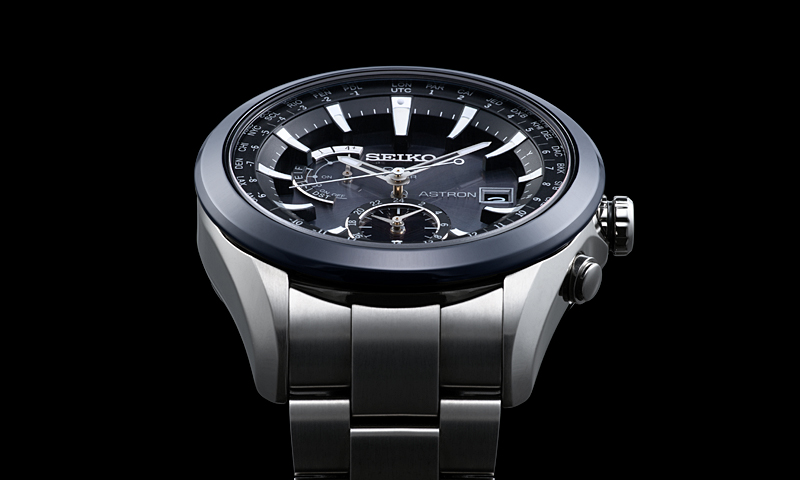
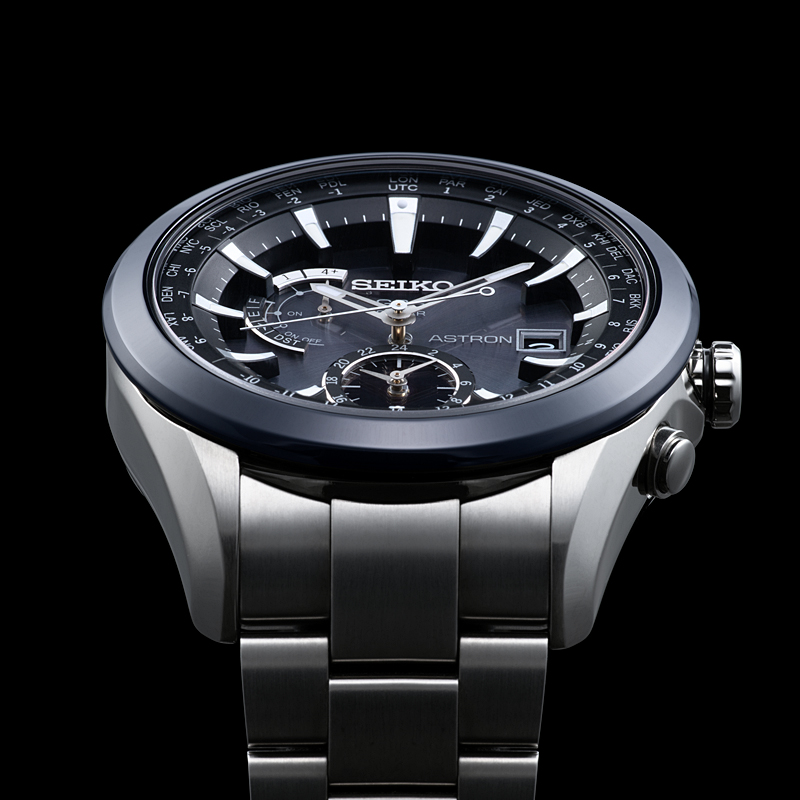
The brand that always takes on the challenges of new technology and design.
As 2019 was the 50th anniversary of Astron, some limited editions were introduced. One of them was SBXC035, which was released as a limited edition of 200 pieces in July 2019. Its titanium case has a bezel made of cermet material, which is composed of ceramic mixed with metal powder.
Cermet is a material manufactured by mixing and sintering ceramic and metal powder, combining the hardness and durability of ceramic and the toughness (tenacity) of metal. In tribute to the 50th anniversary, the bezel has 50 facet cuts on the surface.
The 50th anniversary model released in July 2019. While using innovative materials and technologies, its face can be considered that of an orthodox Astron.
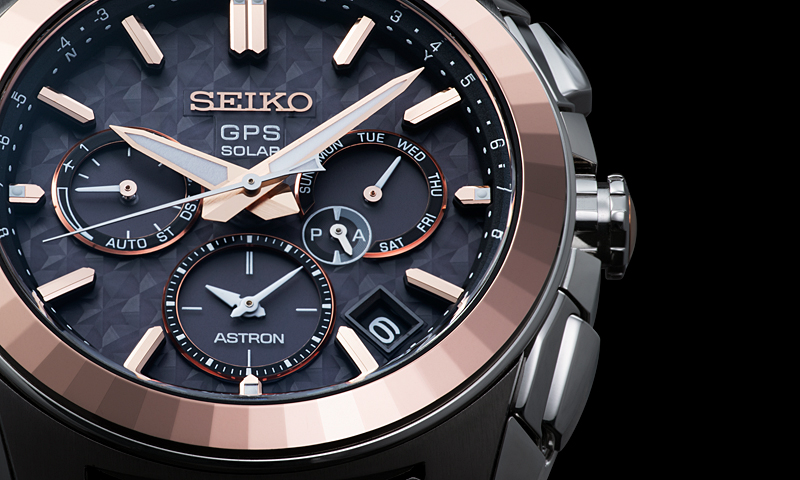
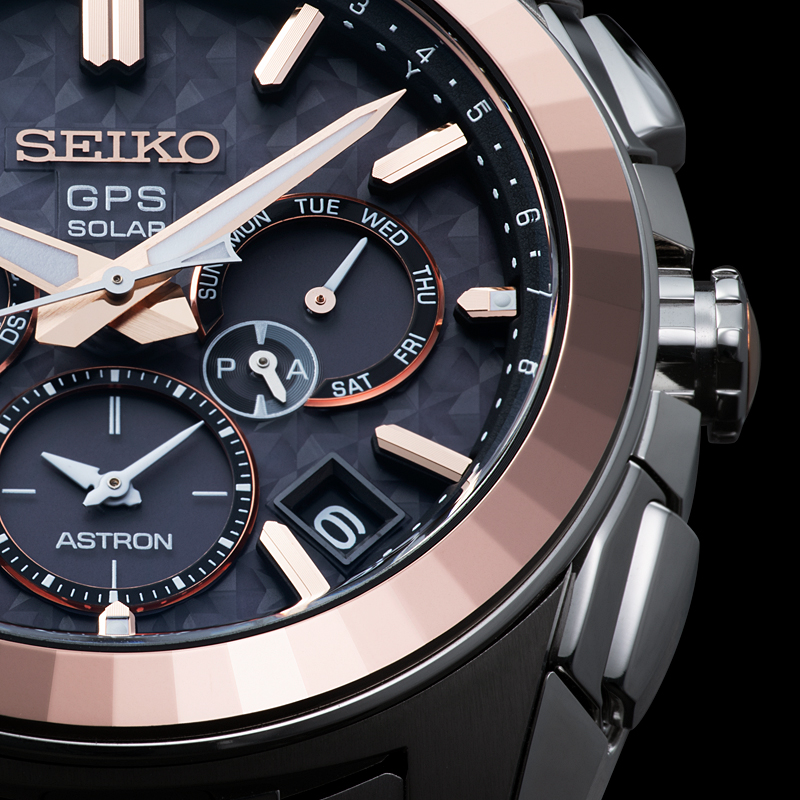
The bezel, which is only a few millimeters thick, is cut at an angle to divide it into 50 separate surfaces. This is extremely difficult work and I think it must have been a major challenge to the staff at the manufacturing site. But they accepted our request for making the 50 facet cuts for the 50th anniversary, and they actually made it a reality.
Beyond the 50 facet cuts, many unprecedented and innovative designs have been proposed for the Astron. Receiving these proposals, the development team has taken on new challenges with a spirit that can be expressed as “If it’s for the Astron, let’s give it a shot!”; and they have actually materialized the designs many times.
Another feature of this model is the innovative case shape, which is created by joining together two high-precision parts processed by a 5-axis NC machine. In addition, an innovative idea of making holes along the sides of the case was incorporated in order to accentuate the double-layer structure.
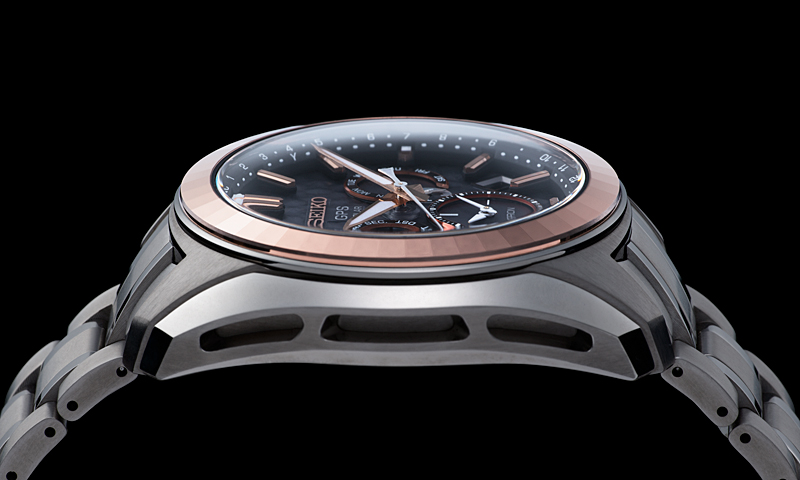
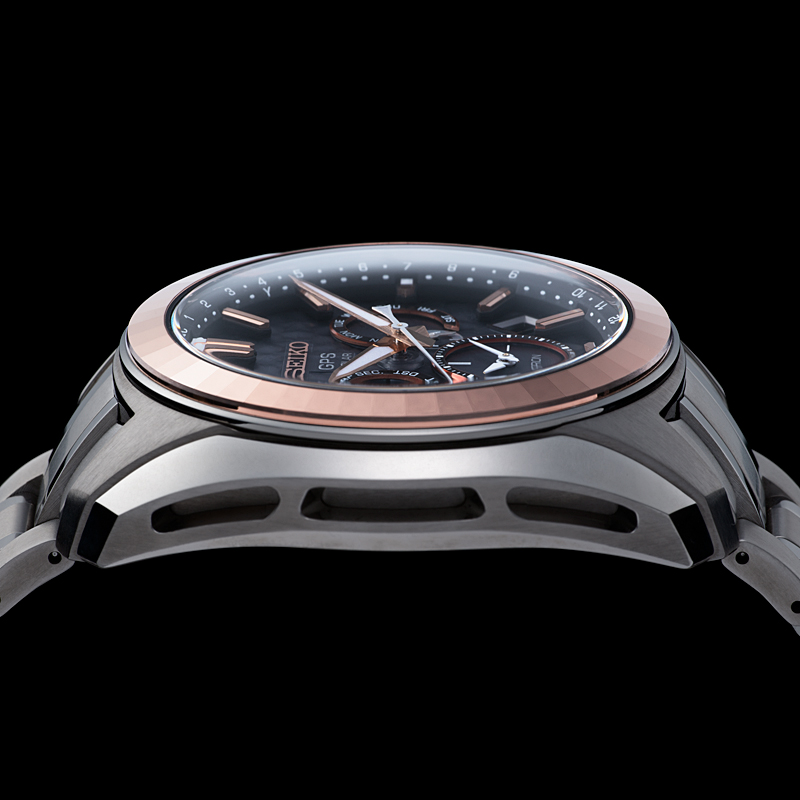
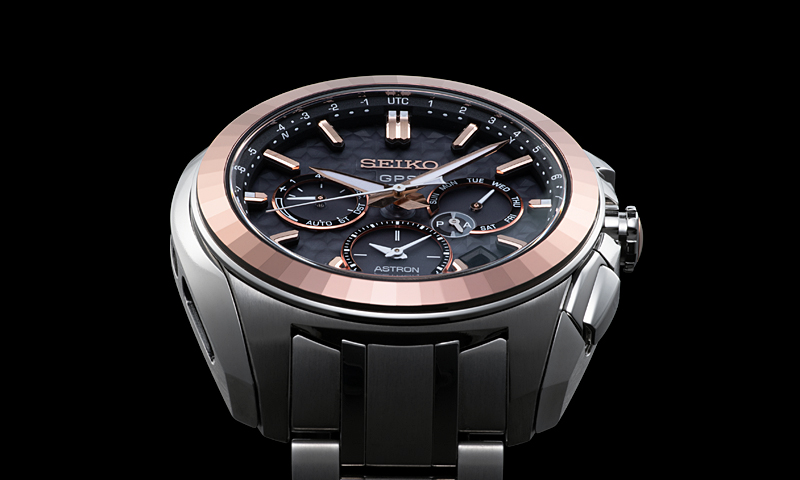
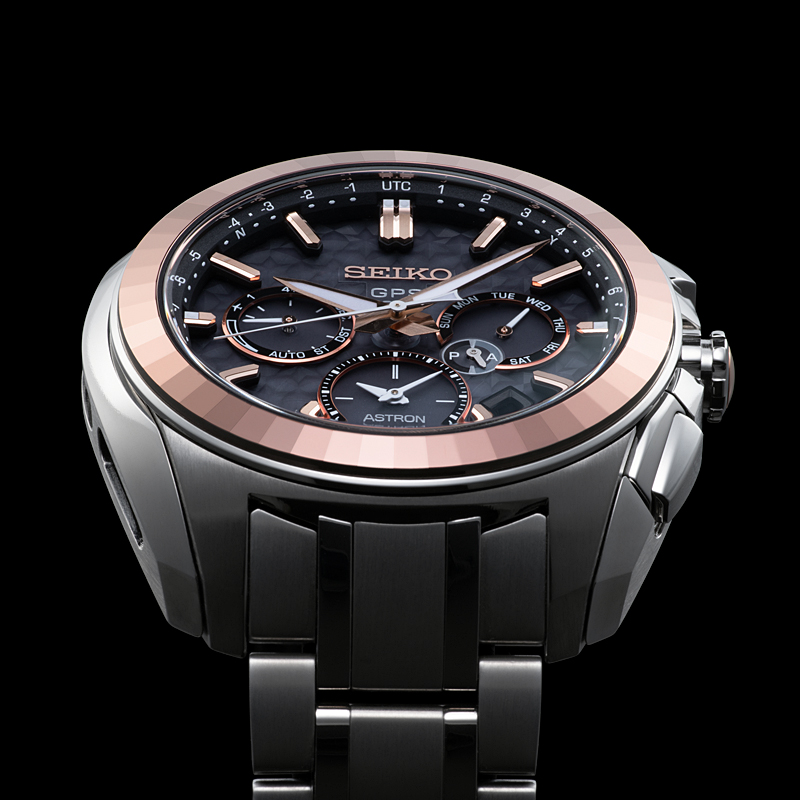
Nonetheless, taking another look at the latest Astron now, I think you can see that the overall look, including the shape of the case, is similar to that of the first Astron launched in 1969. While it is an innovative design, it still retains the underlying, general Astron qualities.
There are also many technologies that have been created in order to achieve the Astron designs, including the super-clear coating on the dual (both sides)-curved sapphire glass, which was previously impossible. The Astron is indeed the brand that pursues and achieves not only advanced technologies, but also unparalleled, innovative designs.
In and after 2020, the Astron will continue to be the brand that embodies the evolution of watches and gives the world unprecedented surprises and inspiration in terms of both technology and design.
